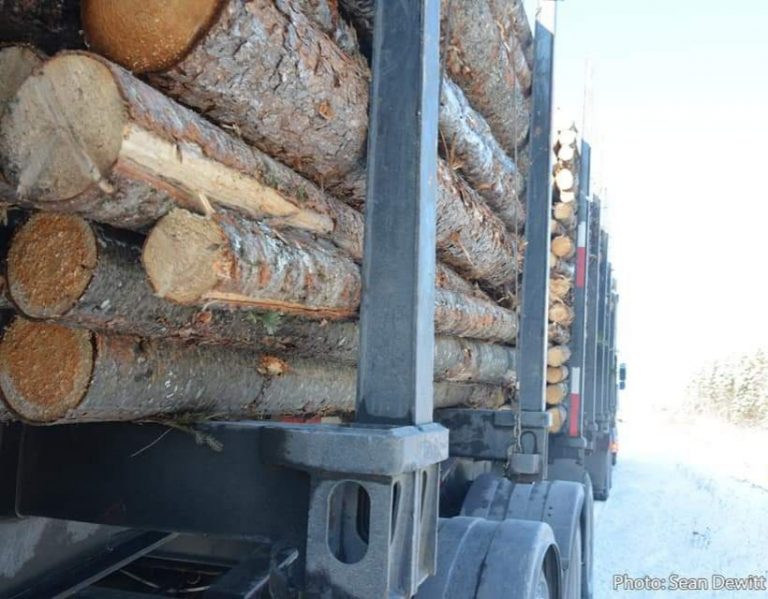**** LANDS / FORESTRY Release
Province Releases Key Guides as Part of Ecological Forestry Implementation
——————————————————-
The province is sharing new guidance tools for mixed forests and high-production forestry zones and is now shifting to implementation planning for ecological forestry.
The guidance tools provide an overview about how ecological forestry will be done on Crown lands, as part of implementing recommendations from Prof. William Lahey’s 2018 independent review of forest practices. They reflect input from public and stakeholder consultations and from the Minister’s Advisory Committee.
“We are transforming how we manage our public lands, creating a made-in-Nova Scotia approach that supports a sustainable, diverse forestry sector that will see more trees retained when harvesting takes place, less clearcutting in Crown forests and greater protection of native biodiversity and ecosystems,” said Lands and Forestry Minister Chuck Porter. “We will be better able to meet our province’s ecological, economic, social and cultural goals through the triad model, while still supporting an important economic sector in this province.”
The triad model of ecological forestry divides the land into three zones that work together to balance the diverse interests and expectations Nova Scotians have for Crown lands. The three zones are conservation zones, high production forestry zones and mixed forest or matrix zones.
The Silvicultural Guide for the Ecological Matrix is a technical guide that outlines silviculture and timber harvest methods within matrix zones. The triad model prioritizes biodiversity conservation through lower impact forestry and reduces clearcutting in zones where the guide will be applied.
As implementation planning moves forward, changes may be made to this guide as needed.
The new silvicultural guide will come into effect after the department trains forest professionals so they can better understand and apply the guide and its requirements. Interim retention guidelines for Crown land harvests, which have significantly decreased the number of clearcuts approved on Crown lands, will continue to apply until harvests are approved under new requirements.
The other new guidance tool is the High Production Forestry final report, which outlines criteria that will be used to identify, rank and select high-production forestry zones. Crown lands approved for high-production forests will produce high-value forest products in long-term cycles while allowing a larger proportion of public land to be managed for ecological objectives.
No sites have been selected yet for high-production forests. Detailed site assessments and the selection process must still take place.
“These guides have been developed with feedback gathered during extensive consultations and I thank everyone for engaging with us since 2018,” said Mr. Porter. “We will continue to engage with the public, stakeholders and experts and work with the sector to prepare them for the changes to come.”
Quotes:
“This is a good first step in the full implementation of the triad model. WestFor fully supports Professor Lahey’s report and is excited to begin implementing all legs of the triad model together on Crown lands. We support the direction the government is taking to balance multi-use objectives across Nova Scotia’s Crown lands forests.”
– Breck Stuart, general manager, WestFor Management Inc.
“I’m very pleased to see the new forest management guide for the ecological matrix on Crown lands finally released and soon to be implemented on the ground. This will significantly improve forestry practices on public lands and reduce clearcutting and the associated negative impacts on biodiversity. I’m looking forward to its rapid deployment.”
– Raymond Plourde, senior wilderness co-ordinator, Ecology Action Centre
Quick Facts:
— the Silvicultural Guide for the Ecological Matrix will replace the current Forest Management Guide and the interim retention guidelines released in 2018
— the Ministerial Advisory Committee appointed to advise the department on implementing ecological forestry includes representatives from industry, academia and environmental organizations
Additional Resources:
The two documents can be found on the Ecological Forestry website: http://novascotia.ca/ecological-forestry/
Ecological Forestry video: http://www.youtube.com/watch?v=oDB1j_0Dzno
Lands and Forestry on Twitter: http://twitter.com/NSLandsForestry
Descriptions and locations of protected areas are available at: http://novascotia.ca/nse/protectedareas/map.asp




